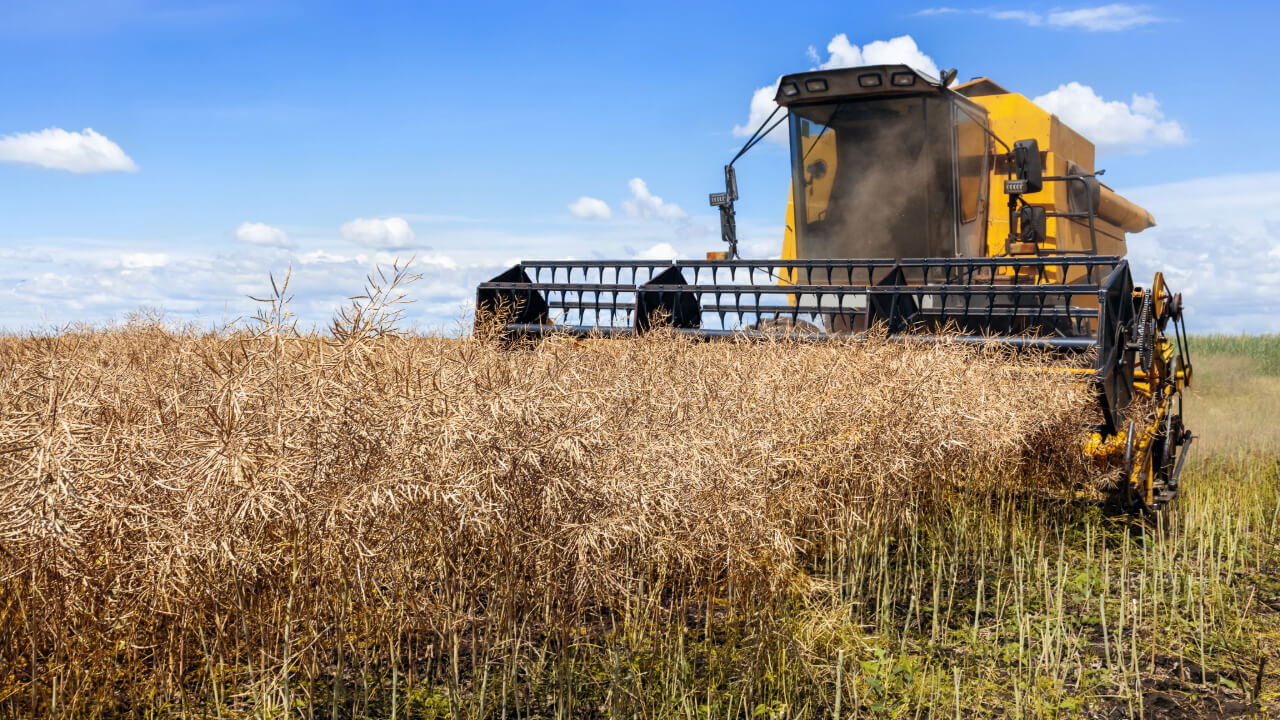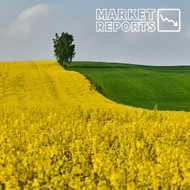UK Harvest 2025: Encouraging Oilseed Rape, But Wheat Takes a Hit
Posted by Emma on 28th Jul 2025 Reading Time:
The UK’s 2025 harvest season has been nothing short of unpredictable. A fast start in early July offered hope. Still, that optimism has been tempered by repeated interruptions from heavy rainfall, forcing a frustrating stop-start rhythm for farmers across the country.
The second harvest report of the year from the Agriculture and Horticulture Development Board (AHDB), released on 25 July, paints a varied picture. While winter oilseed rape is proving a shining star, wheat and barley have encountered mixed fortunes, with many farmers still anxiously waiting for clearer skies—and clearer results.

Oilseed Rape: This Year’s Overachiever
If there’s one crop offering a silver lining this season, it’s winter oilseed rape. As of 23 July, 54% of the UK crop had been harvested, compared with 21% just a week earlier. And while progress is trailing behind last year’s figures, yields are well ahead.
The national average yield stands at 3.76 tonnes per hectare (t/ha)—a remarkable 21% above the five-year average of 3.11 t/ha. Regional performance is especially strong in the Eastern and South-Eastern parts of England, up by 39% and 27% respectively.
Quality is another key advantage, with an oil content averaging around 45%, ranging from 42% to 46%. However, some early sowing of next year’s crop has already taken place due to the recent rainfall, which could impact the establishment of new plants depending on conditions going forward.

Winter Wheat: A Sluggish Start with Mixed Prospects
Wheat farmers are treading carefully. As of 23 July, just 11% of the UK’s winter wheat crop had been harvested—a mere six percentage point increase over the previous week. This is on par with 2022 but behind last year’s pace.
Early yields are down 11% on the five-year average, coming in at 6.9 t/ha. There’s wide variation between regions and even within individual farms, making it hard to draw firm conclusions just yet. The good news? Early quality looks promising. Protein levels are often 14% or higher, which is well above the UK Flour Millers’ 2024 group 1 average of 12.5%. This could support milling quality, provided wet conditions don’t compromise later-harvested crops.
Farmers Feeling the Strain
For some farmers, particularly those in regions affected by erratic weather, the season has been challenging. Will Dickinson, a farmer near St Albans, fears that his wheat crop may not be profitable at all. A combination of springtime wet weather and recent dry spells has left him anticipating a 10–25% yield decrease. With the global price of wheat currently below the cost of production, there’s concern that the grain harvested might not even be suitable for bread due to its shrivelled appearance.
“There’s a real worry that we’re growing this crop just to make a loss,” said Dickinson. “We do everything we can to build resilience into our systems—diversifying crops, using organic fertilisers, and adapting how we cultivate. But the weather has the final say.”
Market Moves: Global Influence Meets Local Pressure
Markets have responded accordingly. On 25 July:
- UK feed wheat (Nov-25) futures fell £1.05/t to £177.70/t
- May-26 contracts dipped £0.75/t to £189.40/t
- Paris milling wheat (Dec-25) dropped 0.8%, while Chicago held steady
- Paris rapeseed (Nov-25) fell €2.75/t to €482.50/t
- Winnipeg canola dipped 0.3%, while Chicago soybeans nudged up 0.2%
The pressure on UK wheat prices mirrors trends across Europe, with price competition from Black Sea exporters pushing Paris prices lower. For rapeseed, strong yields haven’t been enough to counteract the broader downward drift in oilseed markets.
Looking Ahead
The next AHDB harvest update is scheduled for 8 August, by which time progress is expected to pick up—weather permitting. If wet conditions persist, further trouble may lie ahead for crop quality, particularly for milling wheat, and yields could decline further for crops such as oilseed rape and pulses.
There’s also likely to be more discussion in the weeks ahead about land-use decisions for next season. With wheat yields under pressure and rapeseed performing well, competition for winter sowing area could intensify.
For now, farmers and analysts alike are keeping one eye on the skies and the other on the spreadsheets—hoping for a drier, steadier August to bring this topsy-turvy harvest back into balance.


